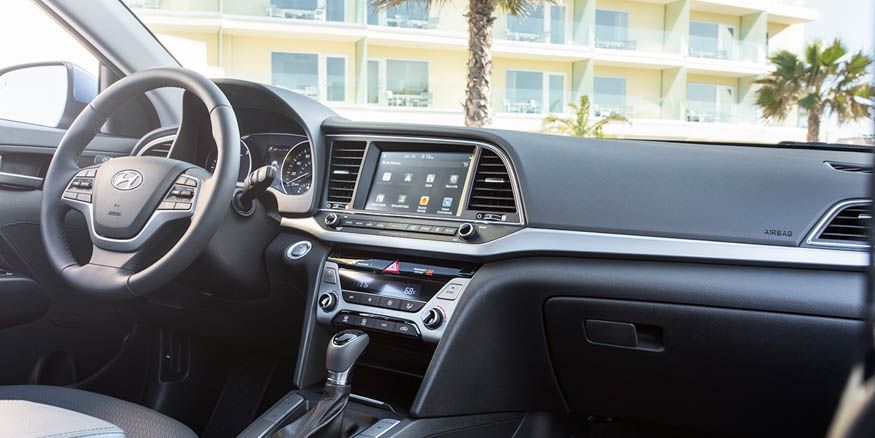Hyundai/Kia Will Pay Owners $200 Million over Easily Stolen Cars

Kia and Hyundai have been dealing for years with social media videos that show how easy it is to steal some of their models and encourage others to give it a shot.Around 9 million mostly base trim Kia and Hyundai vehicles are affected, and their owners have been offered steering wheel locks and other anti-theft devices in the past. Read on for a list of affected models.The new settlement will cost the automakers around $200 million, with $145 million set aside for customers’ out-of-pocket losses as they’ve dealt with this issue.
The “Kia Challenge” TikTok fad will cost Hyundai and Kia another $200 million.
The two automakers have agreed to pay an expected $200 million as compensation for customers who had their cars stolen or damaged in ways not covered by insurance. The money will also reimburse Hyundai and Kia owners for any losses due to paying insurance deductibles, higher insurance premiums or other theft-related losses.
In around early 2021, users of the popular video-sharing site TIkTok started seeing videos showing just how easy it was to steal some Hyundai and Kia vehicles built without push-button ignitions or an immobilizer, a device that prevents the car from moving if a key fob is not detected. Before going nationwide, the trend started in Milwaukee, Wisconsin, where the number of stolen Hyundai and Kia models was 25 times higher in the first half of 2021, even as the overall rise in thefts was just 2.5 times higher.
According to Reuters, the $200 million settlement will cover approximately 9 million Hyundai and Kia vehicles, with up to $145 million set aside to cover customers’ out-of-pocket losses. Kia and Hyundai said they expect the court to preliminary approve the settlement in July.
Steering Wheel Locks Were Only a Stopgap
Hyundai and Kia have spent years providing stopgap solution after stopgap solution, including free steering wheel locks and $170 anti-theft kits. In February, Kia and Hyundai said a free security software update would act like an immobilizer on vehicles without them. In April, the automakers worked with AAA to provide insurance for owners who lost coverage from other providers once it became clear how easy it was to steal one of these vehicles.
2017 Kia Soul.
Chris Doane Automotive|Car and Driver
The $200 million settlement will cover costs associated with dealing with these issues for class action participants. As part of the settlement, anyone who owns an eligible Hyundai or Kia vehicle and agrees to the deal will get that free software upgrade automatically installed on their next service visit at a dealer. If the software can’t be installed, the owners will get up to $300 to buy their choice of anti-theft devices.
Around 9 million Kia and Hyundai vehicles were potentially affected by the Kia Challenge. The list of affected vehicles is below, with the easy-to-steal versions mostly the entry-level trims that did not have push-button ignitions. There are websites for Kia owners and Hyundai owners to get more information about their specific vehicle.
Hyundai Models
2011–2022 Accent2011–2022 Elantra2013–2017 Elantra GT2013–2014 Elantra Coupe2011–2012 Elantra Touring2011–2014 Genesis Coupe2018–2022 Kona2020–2021 Palisade2011–2012, 2019–2022 Santa Fe2013–2018, 2019 Santa Fe, Santa Fe XL2013–2018 Santa Fe Sport2011–2019 Sonata2011–2022 Tucson2012–2017, 2019–2021 Veloster2020–2021 Venue2011–2012 Veracruz
Kia Models
2011–2021 Forte2021–2022 K52011–2020 Optima2011–2021 Rio2011–2021 Sedona2021–2022 Seltos2010–2022 Soul2011–2022 Sorento2011–2022 Sportage
Contributing Editor
Sebastian Blanco has been writing about electric vehicles, hybrids, and hydrogen cars since 2006. His articles and car reviews have appeared in the New York Times, Automotive News, Reuters, SAE, Autoblog, InsideEVs, Trucks.com, Car Talk, and other outlets. His first green-car media event was the launch of the Tesla Roadster, and since then he has been tracking the shift away from gasoline-powered vehicles and discovering the new technology’s importance not just for the auto industry, but for the world as a whole. Throw in the recent shift to autonomous vehicles, and there are more interesting changes happening now than most people can wrap their heads around. You can find him on Twitter or, on good days, behind the wheel of a new EV.



